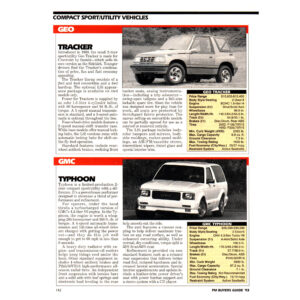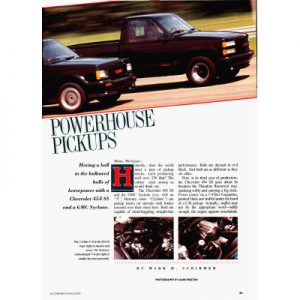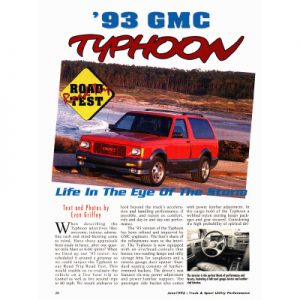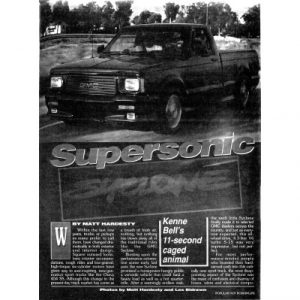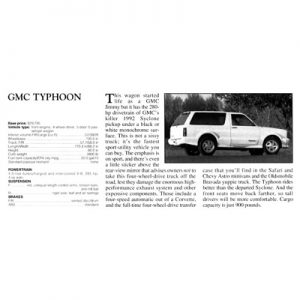Car Craft
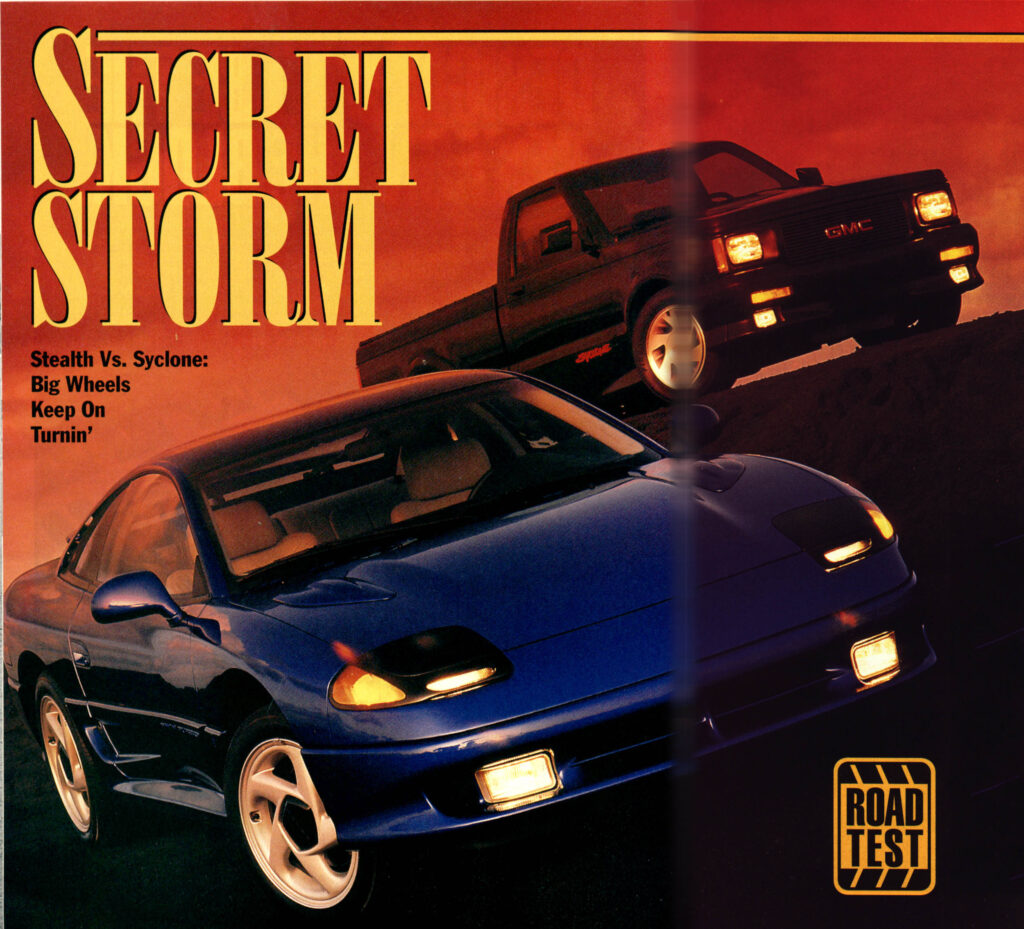
By Don Sherman
ONE OF OUR SNOBBISH COMPETITORS in the magazine biz recently had the gall to compare a compact pickup truck to a Ferrari. Of course it’s absurd. It was also delicious reading-to watch a lowly draft horse show its heels to a $122,000. Italian stallion during quarter-mile acceleration contests.
Unfortunately, that was the end of the story: Our competitor enlightened its readers as to which machine was quicker, but didn’t bother to say which was better. We’ll finish the story for them.
But first, hang on while we torque up the contest a bit. In place of an extra-virgin ’92 Ferrari 348 Spyder, we’ve substituted a more practical Japanese/American pinch hitter. The Dodge Stealth R/T Turbo packs more horsepower (300 vs. the Ferrari’s 296), and more modern technology in a wrapper that’s, to our eyes, a solid nine on the exotic styling scale. More to the point, the Stealth costs $32.452, which is expensive but less than one-third the price of a factory-fresh Ferrari, and only a few installments more than the foil in this comparison test, the GMC Syclone Truck.
Predictably, a few readers are having trouble at this point. You don’t want to see Ferraris in CAR CRAFT . You’re not interested in rice grinders either. Some of you may not grasp the concept of a pickup truck compared to a 2+2 sports coupe in the same performance-comparison test.
But hang on to your subscriptions for a minute. Forget, for the time being, the fact that one looks like the shipping crate the other one came in. When they’re turned upside down, these machines are practically identical.
Both contenders have turbocharged V6 engines. Both use full-time four-wheel drive to plant the power into the pavement. Both are, for all practical purposes, pure two seaters-an entertaining ride for the driver and his/her date with little room (or cargo capacity) for freight.
And, as you’ll soon see, each performs within a smidgen of the other whether the wrestling match is go, stop, or turn.
So, on with the show.
In the far corner, we have the Dodge Stealth boasting knock-’em-dead styling (courtesy of Dodge) and a full load of ultra-tech hardware (courtesy of Mitsubishi) built to the finest Japanese standards. Under the hood, there’s a 3.0-liter four-cam, 24-valve, 60-degree V6 with twin turbochargers and intercoolers. Fuel is delivered by computer-controlled port injectors to tuned-length intake runners. The plugs are lit by a distributorless ignition. The block is a light-weight cast-iron design crowned with aluminum heads. Cogged belts drive the overhead cams and the valves are opened by forged-aluminum rocker arms with needle-bearing pivots and roller tips. Every tech trick in the book is packed somewhere under the Stealth’s hood.
Getrag, a noted German transmission builder, contributed the five-speed manual transaxle to this engineering exercise. Torque is split via a planetary-type center differential in a 45:55 front:rear ratio. Viscous-type limited slips are used in both the center and rear differentials.
The Dodge Stealth has other tricks up its chassis-four-wheel everything: independent suspension, front and rear steering, ABS disc brakes. From the cockpit, you can adjust the shock valving, pick your pleasure in exhaust note, and monitor the climate-control system on a video screen.
The Syclone has fewer gizmos, but it’s no slouch. It makes nearly as much horsepower (280 hp vs. the Stealth’s 300), and far more torque (350 lbs.-ft. versus the Stealth’s 307) from a comparatively crude 4.3-liter all-iron, 90-degree, pushrod V6. One Mitsubishi TDO6 turbocharger force-feeds air through a single water-to-air intercooler on the way to a tuned-port intake manifold.
Downstream, a four-speed Turbo-Hydramatic transmission handles shifting and a Borg-Warner transfer case divvies up the torque in a 35:65 front:rear split. Like the Stealth, the Syclone uses a viscous-type center-differential limited slip (wish a clutch-type limited-slip rear diff).
Other chassis gear is mundane in modern-car terms but quite sophisticated for a truck: disc/drum anti-lock brakes, power-assisted recirculating-ball steering, and a live axle with semi-elliptic leaf spring rear suspension.
Rubber on the road is surprisingly similar. The Stealth’s Goodyear Eagle tires are slightly lower in profile and mount to larger wheels than the Syclone’s Firestone SVX skins, but tread widths are comparable.
With the formal introductions out of the way, let’s lace up the gloves and let the fracas begin. We conducted acceleration tests on a cold, Michigan, winter day so intercoolers were working with utmost efficiency. The Syclone demonstrates enough pure snap off the line to dislocate your neck. Without chirping a tire, the black box on shiny wheels blasts through 60mph in 5.3 seconds on the way to a 14.1-second quarter-mile sprint with 94.6 mph through the traps. Production Syclones routinely run 13s according to dragstrip timers.
Launching the stick-shift Stealth properly involves abject mechanical abuse, so don’t try this at home. Essentially, rev the engine as high as you dare and side-step the clutch. Kinetic energy from the Dodge’s spinning flywheel catapults the 3500-pound machine into motion with barely a chirp from the tires. (Two or three repeats without a long cool down is enough to melt the clutch.) In a drag race, a Stealth driven in such manner beats the Syclone to the end of the quarter-mile by one hundredth of a second. Round one-drag-strip acceleration-was, for all intents, a tie.
That’s odd because the two machines feel drastically different when driven in the “real” world: The Syclone rips asphalt like its turbo is permanently on nitrous while the Stealth feels tied to a post unless its tach needle is tickling the 7000-rpm redline.
To find out how this could be, we studied three factors: weight, gearing, and passing response.
The first discovery is that the Japanese sports coupe outweighs the “crude” American-made truck by 213 pounds! At 60 mph in top gear, both the Stealth’s and the Syclone’s engines are loafing at 2100 rpm. (Super-tall gearing allows both manufacturers to skirt the EPA’s gas-guzzler taxes.) Nail the gas in the truck and it automatically drops one or two gears to send you on your way. In the Dodge, it’s necessary to frantically stir the cable-operated shift linkage to rouse the engine and generate boost.
In passing acceleration tests, the automatic Syclone wins hands down. Running from 30-50 mph, the Stealth must be in second gear to beat the Syclone’s hands-off time of 2.8 seconds; without shifting, the Stealth requires over 10 seconds for that task (see performance/specifications chart). It’s the same story during 50-70 mph passing acceleration. Here, the Stealth has to be in third gear to put the motor on the GMC; left unshifted, it spends 7.7 seconds doing what the truck takes 4.4 seconds to do.
Chalk a victory up for the ebony-painted windy one.
In handling, the Stealth won decisively. It demonstrated more grip on the skidpad (0.90g versus 0.82g) and more agility through a 600 foot slalom course (62.8 mph versus 60.9 mph). The differences between the two are, however, less than appearances would suggest. After all, one machine is a crypto-Ferrari, while the other one is little more than a manure hauler dressed up in Saturday night attire. The Syclone is held back by strong understeer at the limit of adhesion and slow steering all of the time. The Stealth, on the other hand, sticks and steers like a slot car until you ask too much and then the rear wheels slide wide with little warning. Nevertheless, the victory in handling tests goes to the Dodge. That ties the score one to one.
Braking tests do little to break the deadlock. The Stealth stops 6 feet shorter from 60 mph-not a significant advantage-while demonstrating a stronger propensity for brake fade.
So, the track test results don’t point a finger at a clear winner. The contest comes down to which vehicle does the best job painting a permanent smile on your face and delivering the most satisfying kick in the pants.
Now the choice is easy. The Dodge Stealth is cool to be seen in but boring to drive unless your threshold of fun is playing with the climate-control’s video screen. The GMC Truck Syclone, on the other hand, is a perpetual good-time Charlie: always in the mood for games. Its favorite prank is embarrassing high-profile hotshots (like a Stealth in the wrong gear) with its remarkable traction and off-the-line acceleration.
The factories have devised some of the best special-purpose street machines in history. Lately, that art had seemed lost until the Syclone came along to revive past traditions. This little black truck combines plenty of power with unshakable traction and wraps it in the security blanket of proper engineering backed up by a 36-month warranty. Having demonstrated so much pure creativity with a compact pickup truck, it boggles the mind what GMC might do if given the chance to play with cars.

